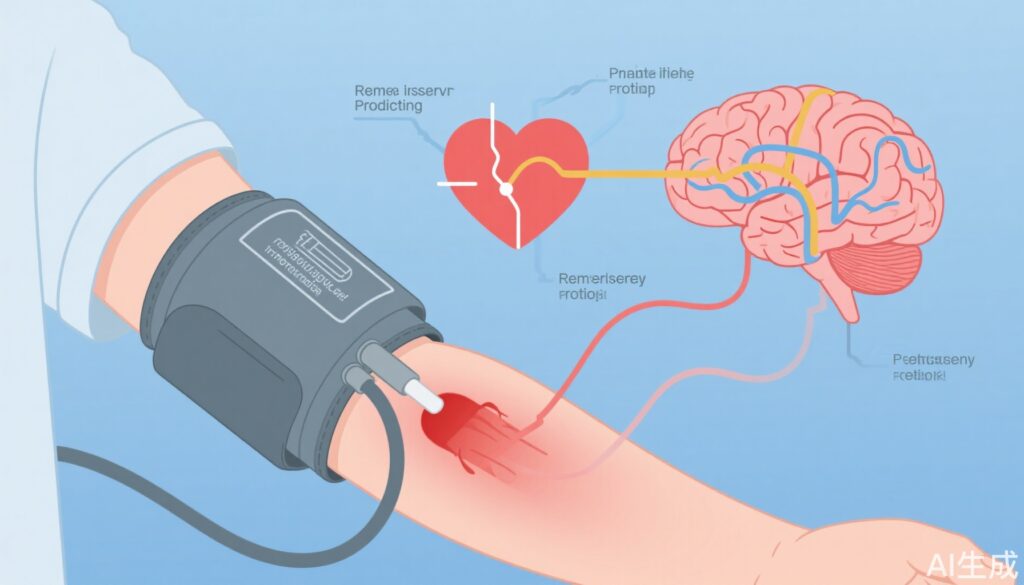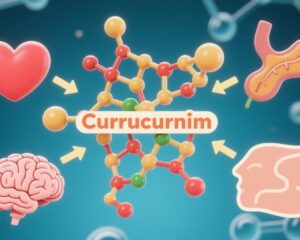Highlights
- Remote ischemic preconditioning (RIPC) demonstrates organ-protective effects in cardiac surgery, notably reducing acute kidney injury and myocardial injury in specific populations.
- In acute ischemic stroke, RIPC shows promise in improving functional outcomes, particularly in moderate stroke and large artery atherosclerosis subtypes, though results vary across studies.
- Mechanistic studies implicate modulation of erythrocyte aggregation, hypoxia-inducible factors, and protective signaling pathways including HIF-1α, Akt, STAT, and eNOS as key contributors.
- While RIPC is safe and feasible, translation into consistent clinical benefit remains challenging, warranting further large-scale, well-designed trials.
Background
Ischemic heart and cerebrovascular diseases remain leading causes of morbidity and mortality worldwide. Ischemia-reperfusion injury (IRI) adversely impacts outcomes in myocardial infarction, stroke, and surgical interventions. Remote ischemic preconditioning (RIPC), involving brief, repeated cycles of transient ischemia and reperfusion in a remote tissue (usually a limb), has emerged as an intriguing, non-invasive strategy to confer systemic protection against IRI. Understanding the evolving evidence base, especially from rigorous clinical trials and mechanistic studies, is critical for translating RIPC into clinical practice for cardiac and cerebral ischemia.
Key Content
Chronological Development of Evidence in Cardiac Ischemia
Early randomized controlled trials (RCTs) in the mid-2000s demonstrated myocardial protection by RIPC in pediatric cardiac surgery (Cheung et al., 2006) via four cycles of limb ischemia-reperfusion reducing postoperative troponin I release and inotropic requirements. Subsequently, RIPC showed efficacy in adults undergoing elective open abdominal aortic aneurysm repair by reducing postoperative myocardial injury and renal impairment (Hausenloy et al., 2007). However, findings in adult coronary artery bypass grafting (CABG) surgery have been inconsistent; large RCTs failed to show meaningful reductions in troponin release or improvement in renal/lung outcomes (Meybohm et al., 2010).
More recently, delayed RIPC administered 24 hours before cardiac surgery demonstrated significant reductions in acute kidney injury (AKI) occurrence in high-risk patients (Xiang et al., 2024). This contrasts with trials focusing on acute RIPC timing, suggesting distinct protective windows and mechanisms. A multicenter RCT confirmed reduced AKI rates, renal replacement therapy requirements, and intensive care utilization with perioperative RIPC (Zarbock et al., 2015). These findings underscore RIPC’s potential in perioperative organ protection beyond myocardial ischemia.
Evidence in Cerebral Ischemia and Stroke
Preclinical and early-phase clinical studies suggested neuroprotection via RIPC, which was tested in acute ischemic stroke populations. Pilot RCTs, such as RECAST (England et al., 2017), showed RIPC was safe, feasible, and potentially improved neurological outcomes by modulating heat shock protein 27 (HSP27).
The larger RICAMIS trial (Zhao et al., 2022) including 1893 patients with moderate ischemic stroke demonstrated that adjunctive RIPC significantly increased excellent functional outcomes at 90 days (modified Rankin Scale 0–1), with a favorable safety profile. Post hoc analyses indicated that patients with large artery atherosclerosis (LAA) subtype particularly benefited (Lin et al., 2023), suggesting stroke etiology influences RIPC efficacy.
Conversely, the RESIST trial (Kirkham et al., 2023) involving prehospital initiation and continuation of RIPC up to 7 days in acute stroke patients did not significantly improve functional outcomes at 90 days. This heterogeneity highlights challenges in dialling RIPC protocols, patient selection, and timing.
A study focusing on red blood cell (RBC) physiology found that RIPC reduced erythrocyte aggregation rates in acute ischemic stroke patients without altering RBC deformability or nitric oxide levels, suggesting a hemorheological mechanism contributing to improved microcirculation (Kirkham et al., 2025).
Additional research evaluating remote ischemic perconditioning (administering ischemic cycles concurrent with intravenous thrombolysis) found no significant overall clinical outcome differences but hinted at immediate neuroprotective tissue effects detectable by advanced MRI analyses (Hougaard et al., 2014).
Mechanistic and Translational Insights
In pediatric tetralogy of Fallot repair surgery, RIPC attenuated myocardial ischemia-reperfusion injury by modulating hypoxia-inducible factor (HIF-1α) and downstream signaling cascades including phosphorylated Akt, STAT3/5, and endothelial nitric oxide synthase (eNOS), with reduced mitochondrial vacuolization and improved biochemical markers correlating with shorter ICU stay and ventilation duration (He et al., 2018).
The modulation of systemic inflammatory responses, hemorheology (e.g., erythrocyte aggregation), and protective proteins like HSP27 are implicated as mechanisms. These findings support the concept that RIPC engages multi-organ systemic protective pathways beyond localized ischemic stimuli.
Safety and Tolerability
Across trials, RIPC procedures, typically involving 3-5 cycles of 5-minute ischemia/5-minute reperfusion using a blood pressure cuff, were well tolerated with minimal adverse effects such as mild limb discomfort or petechiae. Serious adverse events were comparable between RIPC and control groups.
Expert Commentary
The current body of evidence underlines the potential of RIPC as an inexpensive, non-invasive adjunct for protecting cardiac and cerebral tissues against ischemia-reperfusion injury, especially in perioperative settings and moderate ischemic stroke. The varying efficacy reported may reflect differences in timing (acute versus delayed conditioning), patient selection (stroke subtype or surgical risk), protocol standardization, and outcome measures.
Guideline perspectives remain cautious due to heterogeneity and need for replication in larger, well-powered trials. Mechanistically, the engagement of endothelial, erythrocyte, mitochondrial, and molecular signaling pathways offers biological plausibility. Further exploration into biomarkers to predict responders and optimize conditioning regimens is warranted.
Striking a balance between maximizing protective effects and practical feasibility in acute settings is essential. Moreover, integrating RIPC with reperfusion therapies (e.g., thrombolysis, percutaneous coronary interventions) may potentiate benefits but requires careful trial design.
Conclusion
Remote ischemic preconditioning has matured from preclinical promise to multiple clinical efficacy signals in cardiac and cerebral ischemia. It has consistently shown renal and myocardial protection in select cardiac surgery populations and promising neuroprotection in acute moderate ischemic stroke, especially in LAA subtypes. Mechanistic insights reveal systemic hemorheological and molecular signaling modulation. Despite inconsistent results in some stroke and cardiac settings, RIPC remains a safe, cost-effective intervention meriting further investigation with optimized protocols, biomarker integration, and targeted patient stratification to realize its full clinical potential.
References
- Cheung MMH et al. RIPC in children undergoing congenital heart surgery. J Am Coll Cardiol. 2006;47(11):2277-82. PMID: 16750696 IF: 22.3 Q1
- Hausenloy DJ et al. RIPC reduces perioperative myocardial and renal injury after elective abdominal aortic aneurysm repair: a RCT. Circulation. 2007;116(11 Suppl):I98-105. PMID: 17846333 IF: 38.6 Q1
- Meybohm P et al. RIPC in human coronary bypass surgery: from promise to disappointment? Circulation. 2010;122(11 Suppl):S53-9. PMID: 20837926 IF: 38.6 Q1
- Zarbock A et al. RIPC reduces AKI in cardiac surgery: a RCT. JAMA. 2015;313(21):2133-41. PMID: 26024502 IF: 55.0 Q1
- Xiang B et al. Delayed RIPC reduces AKI in cardiac surgery patients: a RCT. Circulation. 2024;150(17):1366-76. PMID: 39319450 IF: 38.6 Q1
- Hougaard KD et al. Remote ischemic perconditioning adjunct to thrombolysis in acute ischemic stroke: RCT. Stroke. 2014;45(1):159-67. PMID: 24203849 IF: 8.9 Q1
- England TJ et al. RECAST trial: RIPC after acute ischemic stroke. Stroke. 2017;48(5):1412-5. PMID: 28265014 IF: 8.9 Q1
- Zhao J et al. RICAMIS RCT: RIPC improves neurological function in moderate acute ischemic stroke. JAMA. 2022;328(7):627-636. PMID: 35972485 IF: 55.0 Q1
- Lin R et al. Post-hoc RICAMIS analysis: RIPC benefits LAA subtype ischemic stroke. Stroke. 2023;54(12):3165-3168. PMID: 37850359 IF: 8.9 Q1
- Kirkham FD et al. RESIST trial: prehospital and in-hospital RIC in acute stroke. JAMA. 2023;330(13):1236-46. PMID: 37787796 IF: 55.0 Q1
- He Y et al. Cardiac protective effects of RIPC in children undergoing tetralogy of Fallot repair. Eur Heart J. 2018;39(12):1028-37. PMID: 28329231 IF: 35.6 Q1
- Kirkham FD et al. RIC effect on red blood cell function in acute ischemic stroke. Stroke. 2025;56(3):603-612. PMID: 39882626 IF: 8.9 Q1


